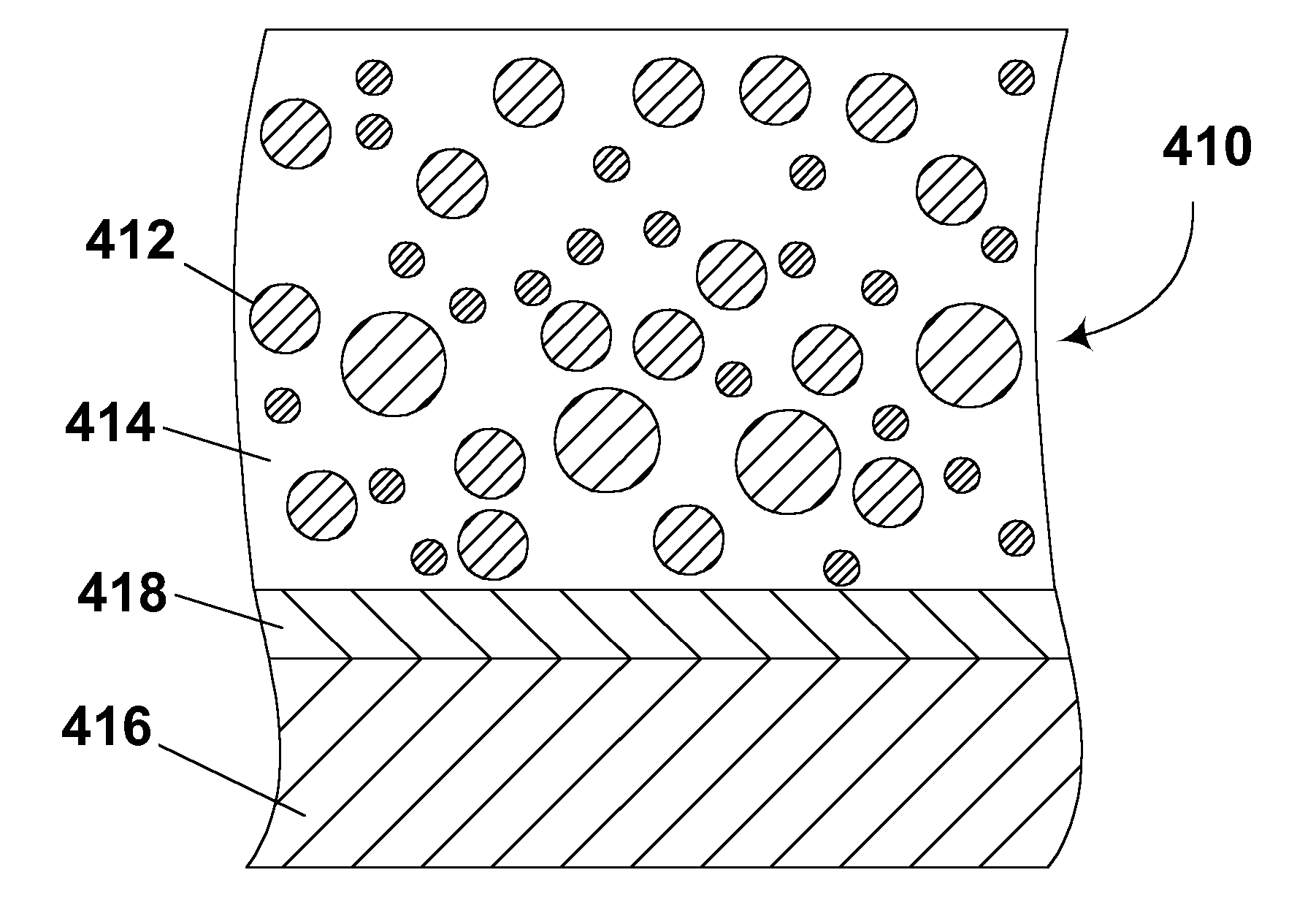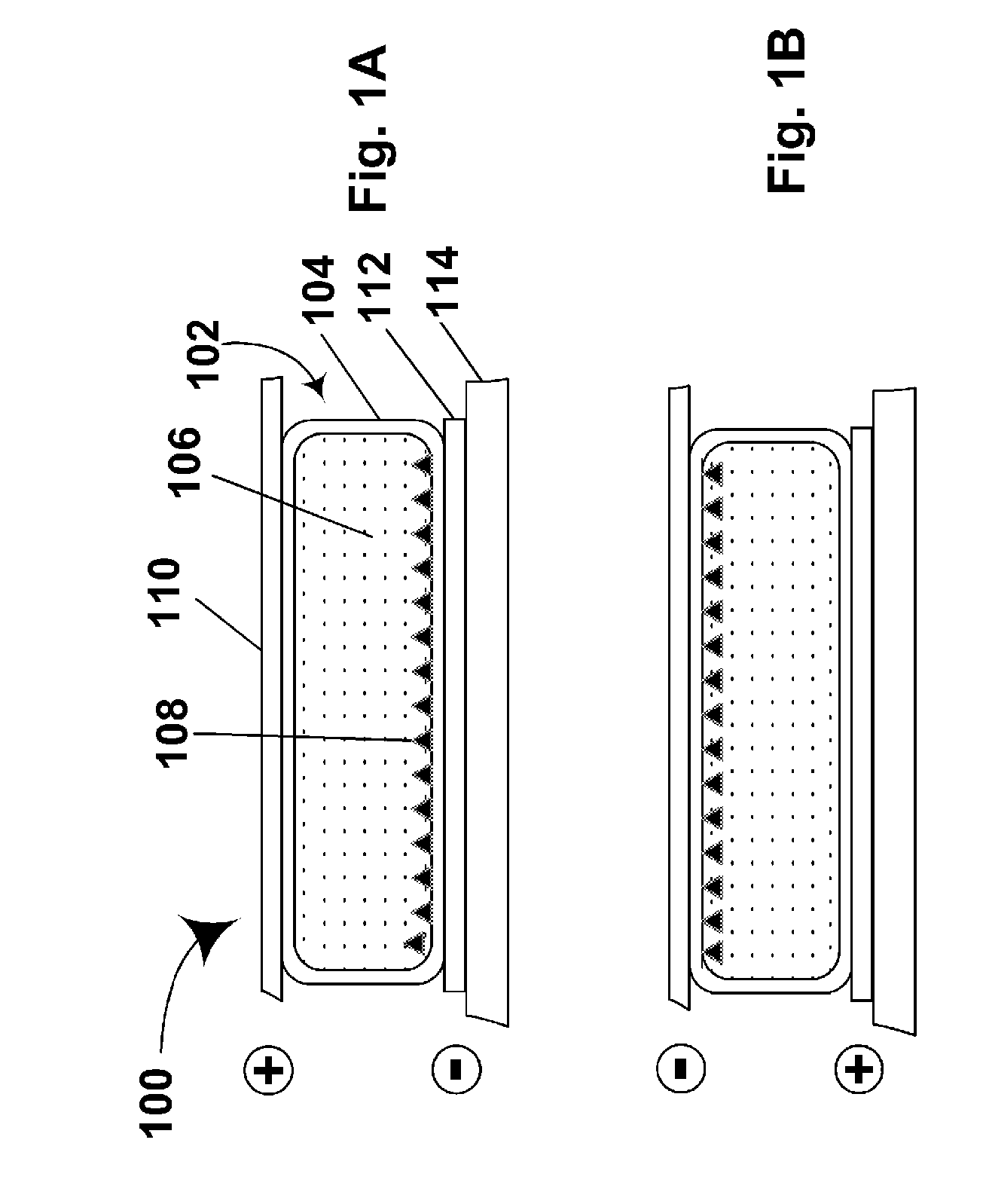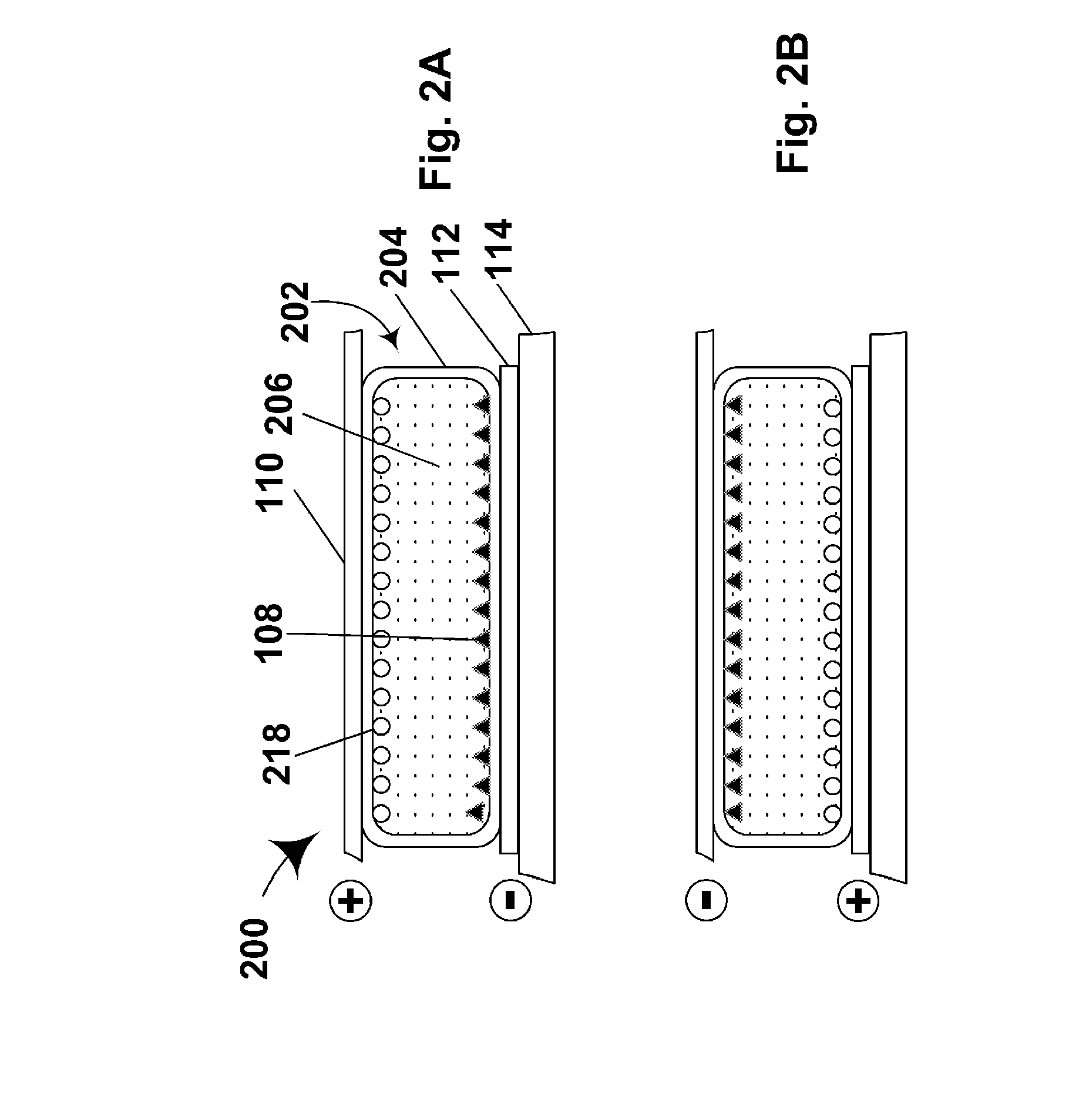Nevertheless, problems with the long-term
image quality of these displays have prevented their widespread usage.
For example, particles that make up electrophoretic displays tend to settle, resulting in inadequate service-life for these displays.
However, the service life of encapsulated electrophoretic displays, of both the single and dual particle types, is still lower than is altogether desirable.
In this regard, opposite charge dual particle electrophoretic displays
pose a particularly difficult problem, since inherently oppositely charged particles in close proximity to one another will be electrostatically attracted to each other and will display a strong tendency to form stable aggregates.
Experimentally, it has been found that if one attempts to produce a black / white encapsulated display of this type using untreated commercially available titania and
carbon black pigments, the display either does not switch at all or has a service life so short as to be undesirable for commercial purposes.
Later, it was found that simple
coating of the electrophoretic particles with the modifying material was not entirely satisfactory since a change in operating conditions might cause part or all of the modifying material to leave the surface of the particles, thereby causing undesirable changes in the electrophoretic properties of the particles; the modifying material might possibly deposit on other surfaces within the electrophoretic display, which could give rise to further problems.
Furthermore, a
polymer with only a few sites capable of reacting with the
particle material has difficulty in reacting with the
solid interface at the particle surface; this can be due to
polymer chain conformation in solution, steric congestion at the particle surface, or
slow reactions between the
polymer and the surface.
Often, these problems
restrict such reactions to short polymer chains, and such short chains typically only have a small effect on
particle stability in electrophoretic media.
However, electrophoretic displays do not have unlimited image stability.
Refreshing the display consumes power, and thus diminishes the utility of the display.
In addition, in certain applications (
active matrix driven displays in particular) it is difficult or impossible to accomplish the refreshing of a
single pixel without a blanking pulse (i.e., a pulse which drives the pixel to one of its extreme optical states before it is driven to the final desired optical state cf. the aforementioned 2003 / 0137521.
However, its use as a
solvent in processes for preparing polymer-coated electrophoretic
pigment particles is markedly inconvenient.
These washing, centrifuging and
drying steps are labor intensive and costly.
Further expense is incurred by the need to re-disperse the dried
pigment in the final suspending fluid.
Furthermore, because of the presence of the
toluene and THF, the washing, centrifuging and
drying steps tend to be hazardous and
commercial scale production of the polymer-coated
pigment requires the use of explosion-proof ovens, mixers and centrifuges, and explosion-proof
electrical control panels, which substantially increases the costs of the production equipment.
Also, operator
exposure to vapors during
processing can be significant despite the use of protective devices or
exposure prevention methods.
Finally, the
drying step may be detrimental to the performance of the pigment in the final electrophoretic medium.
Fabrication processes, however, can result in significant cost.
The
voltage biases can cause errors in the optical states of pixels, as well as degrade the electro-optic medium.
This technique, however, can cause a large gate-pixel
capacitance.
A large gate-pixel
capacitance is undesirable because it can create a need for a large compensation in one of the select line
voltage levels.
Moreover, existing addressing structures can produce unintended bias voltages, for example, due to pixel-to-pixel variations in gate-pixel
capacitance.
Such voltages can produce a detrimental effect on certain electro-optic media, particularly when present for extended periods of time.
The foregoing problems render designing a bistable electro-optic display using a electro-optic medium without a
voltage threshold a difficult task.
Even if these coupled voltage spikes are, over the long term, constrained to be DC balanced, continuous application of these voltage spikes may result in changes in the optical state of the pixels.
In the prior art, essentially the only practicable way to minimize or eliminate the effects of these voltage spikes is to increase the size of the pixel storage
capacitor, which increases the
power consumption of the display considerably.
In addition, the
large size of the storage
capacitor limits the maximum achievable resolution, and may result in a decrease in panel yield by increasing the area of
metal-
metal overlap.
 Login to View More
Login to View More 


